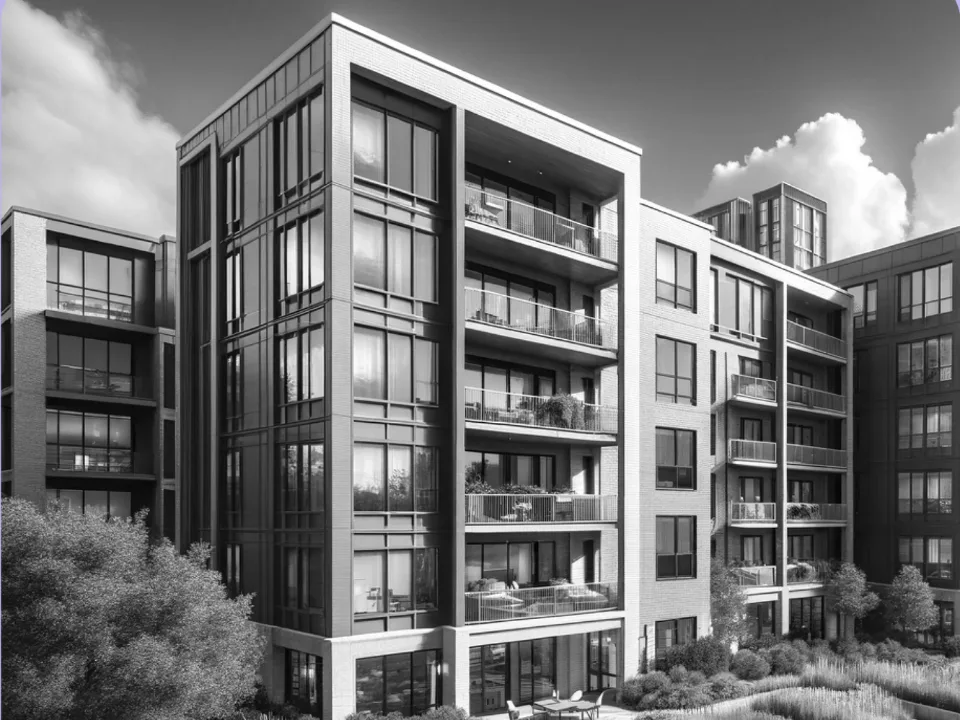"Cyclical Reset" Looms for Industrial Real Estate
Cushman & Wakefield's Industrial Construction report reveals a slowdown in demand as construction completions reach their peak, signaling a shift towards a more balanced market.
Together with
Good morning and happy ICSC week to all! Known as the "Super Bowl for retail professionals," ICSC Las Vegas commences this week, bringing together thousands of retail experts and enthusiasts to delve into emerging trends and engage in discussions about the future of the retail industry.
In today's edition, a recently published industrial construction report reveals a slowdown in demand as construction completions reach their peak. Additionally, we delve into the impact of regional banking consolidation on commercial real estate.
Looking to add some passive income to your portfolio? Check out today’s sponsor RealtyMogul.
Market Snapshot
|
|
||||
|
|
*Data as of 5/19/2023 market close.
👋 First time reading? Sign up here.
BRACE FOR IMPACT
Cushman & Wakefield: Industrial Real Estate Development Heads for “Cyclical Reset”

Cushman & Wakefield's Industrial Construction report reveals a slowdown in demand as construction completions reach their peak, signaling a shift towards a more balanced market.
Construction activity: According to the report, there has been a significant increase in new construction deliveries during the first quarter, with 129 million square feet being completed, marking a 40% rise compared to last year. However, the report also highlights a decline in construction starts, with a 60% drop from Q1 2022 levels and a 34% decrease from Q4 2022.

Source: Cushman & Wakefield Research
From the horse’s mouth: “We have started to enter a cyclical reset to the market after two years of unprecedented demand, and the space under construction is nearly four times the size of the pipeline was at year-end 2007,” said Carolyn Salzer, director, America’s head of logistics & industrial research at Cushman & Wakefield.
➥ THE TAKEAWAY
📣 Takeaways for occupiers:
1️⃣ Increased supply means more options: The growing amount of construction underway in the US will lead to a rise in vacant and available space, offering occupiers a wider range of opportunities. Keep an eye on markets with high construction pipelines and increasing vacancies.
2️⃣ Competition for quality space: Finding high-quality space may become more competitive in markets with low vacancy rates and strong demand. Consider exploring Class B spaces or even sublease options as alternatives to secure space within your budget.
3️⃣ Speculative projects can be tailored: There is potential for customization when speculative projects are preleased. This means you may have the opportunity to shape the building according to your specific needs rather than settling for a standard leased space. Evaluate the markets you are interested in and identify the spaces that best align with your project's requirements.
📣 Takeaways for investors/developers:
1️⃣ Tight markets and positive rent growth: Despite an increase in supply in the coming years, markets are expected to remain historically tight, resulting in continued positive rent growth. While the pace of growth may slow compared to recent years, rents are projected to stay high and exceed traditional escalations in many markets.
2️⃣ Consider excess supply in certain market pockets: Demand is slowing, leading to potential excess supply in specific market areas. This should be taken into account when dealing with existing tenants during lease renewals and when attracting new occupants. Assessing submarkets with excessive construction pipelines, future demand, and current vacancy rates is crucial before initiating speculative construction.
3️⃣ Mitigate oversupply risk: Analyze submarkets with excessive supply alongside demand forecasts and vacancy rates before starting new speculative construction projects. This strategic approach can help reduce the risk of oversupply, minimize vacancy, and maintain a competitive advantage over other property owners in terms of attracting tenants and rental rates.
⏩ Share this article by clicking here.
TOGETHER WITH REALTYMOGUL
Diversify Your Portfolio with Real Estate
RealtyMogul is a real estate investment platform where members can browse and invest in real estate opportunities ranging from multifamily, retail, office, self-storage and more in dozens of locations across the country.
The RealtyMogul Platform offers personalized service, proven business discipline and data-driven insights. Founded in 2012, RealtyMogul members have collectively invested over $1 billion into more than $5.9 billion of real estate nationwide, including over 35,000 investments made since inception and as of December 31, 2022*
Real estate companies, also known as "Sponsors" use the platform to list their real estate deals. Members can easily review, compare and invest in the deals that meet their investing criteria.
Ready to start building your real estate portfolio? Sign up today.
PROCEED WITH CAUTION
Regional Banking Consolidation and its Impact on Commercial Real Estate
The US regional banking system is in crisis due to multiple bank collapses. Economists worry about which larger institutions will benefit from consolidation, as the concentration of funds poses risks for exposed banks.
Impact: Regional bank consolidation has led to larger institutions acquiring smaller ones at reduced prices, raising concerns about decreased competition and increased risk. Since the 1994 Riegle-Neal Interstate Banking Act, the number of FDIC-certified lending institutions has significantly decreased, impacting the banking sector's overall health due to the shift towards larger banks focused on global financial markets.
Threats: The consolidation of regional banks poses challenges for commercial real estate. Small to mid-sized banks play a crucial role in providing capital for the sector. Data shows that these banks account for a significant portion of CRE lending, while big banks prioritize other areas. The consolidation results in decision-making being shifted away from local communities, potentially hindering access to loans for developers.
➥ THE TAKEAWAY
Proposed solutions: To address the crisis and stabilize the banking system, some economists propose raising the deposit guarantee threshold set by the FDIC. By increasing the coverage, the aim is to restore confidence and prevent further bank runs. However, if no action is taken, there is a risk of significant bank closures and branch disappearances. The concentration of banking power would continue, which could have far-reaching implications for the economy.
⏩ Share this article by clicking here.
📰 Daily Picks
-
SF office glut: Uber (UBER) plans to sublease about a third of its San Francisco headquarters, totaling 269,000 square feet. The space is currently unused and part of a cluster of four buildings.
-
'Genius' deal: Blackstone Inc.'s Jon Gray praised the late Sam Zell's genius in timing and managing major negotiations, citing their $39 billion office deal in 2007.
-
CLO issuance: As traditional bank lending for CRE changes, attention shifts to CRE collateralized loan obligations (CLOs), which have outpaced conduit CMBS issuance in 2021 and 2022, according to Trepp.
-
Another one: Office investors are in a tough spot with a troubled loan tied to a Los Angeles office campus, despite Sony Pictures recently securing a lease for a significant space there.
-
Housing boost: In anticipation of a nearby computer chip plant, a developer is aiming to capitalize on the opportunity by planning nearly 600 units within a 20-mile radius of Syracuse.
📈 Chart of the Day
Only four major U.S. metro areas have home prices lower than rental costs. Owning a home typically amounts to around 25% higher monthly expenses compared to renting.
What did you think of today's newsletter? |
HIT THE INBOX OF 65K+ CRE PROFESSIONALS
Advertise with CRE Daily to get your brand in front of the Who's Who of commercial real estate. Subscribers are high-income decision makers, investors, and C-suite executives always looking for their next investment, product, or tool.
*Disclosure: Past performance is not indicative of future results. This information should not be used as a basis for an investor's decision to invest. Investment opportunities on the RealtyMogul Platform are speculative and involve substantial risk. Nothing on this page should be regarded as investment advice. Please carefully review all Defined Terms herein and the additional Disclosures on the RealtyMogul website. All information and any calculations used herein is based on information from inception through December 31, 2022.





















